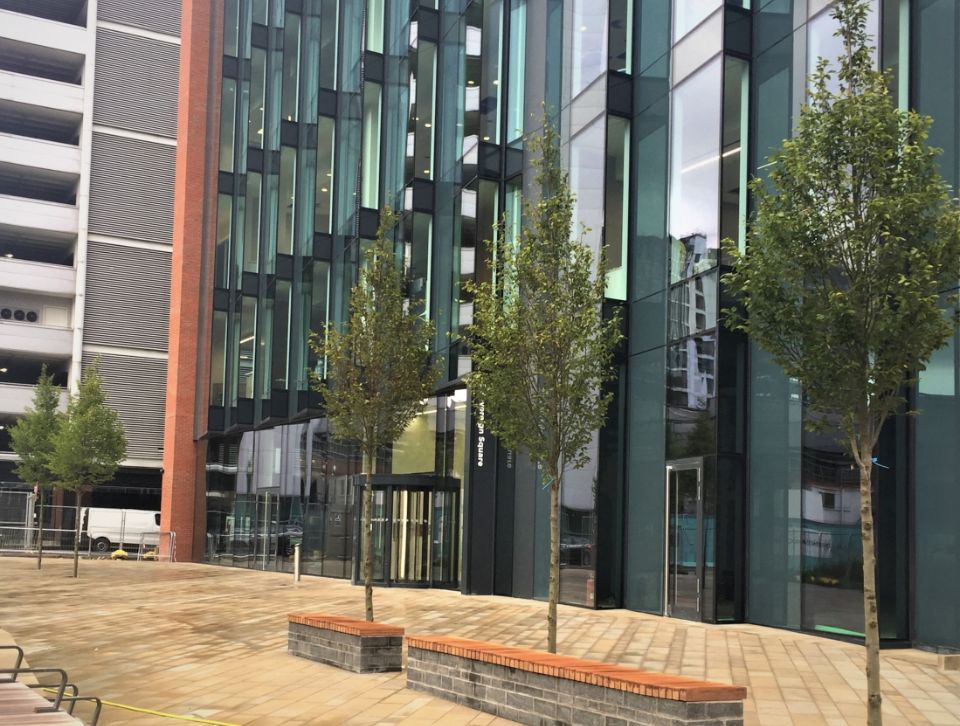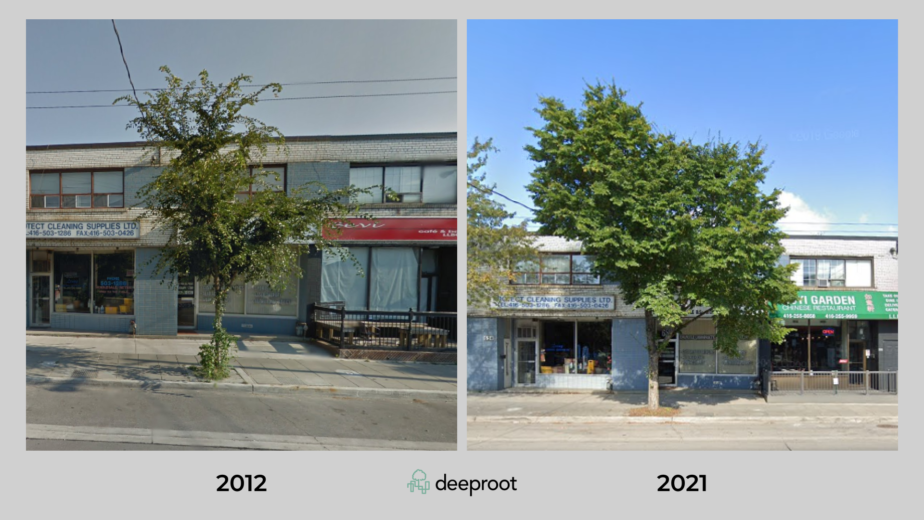 – In 2008, a pilot project to test Silva Cell’s ability to increase urban street canopy while using minimal surface area began.
– In 2008, a pilot project to test Silva Cell’s ability to increase urban street canopy while using minimal surface area began.
– 10 years later we’re seeing the initiative show great results. Stormwater was routed for the purpose of filtering the water and quality control. Trees that continued to receive stormwater runoff showed signs of improved health compared to isolated trees.
As a major thoroughfare in Toronto, ‘The Queensway’, has experienced a significant transformation over the last 70 years; from streetcars in the 1950s to hybrids and electric vehicles in the 2010’s. For the last decade, the street has also been the setting of a study that demonstrates the success of the Silva Cell as a tree and stormwater system in a municipal streetscape.
In 2008 a Sustainable Sidewalk Pilot Project was built on The Queensway using DeepRoot Silva Cells to create two underground bioretention areas supporting four trees. The goal was to study stormwater management and street tree survival. Several key players including the City of Toronto, Toronto Water, Ryerson University, and other divisions, came together to complete the road improvement projects.
In 2018 a case study was written by the Sustainable Technologies Evaluation Program (STEP), which is a partnership between Toronto and Region Conservation Authority (TRCA), Credit Valley Conservation and Lake Simcoe Region Conservation Authority, as part of the ‘Low Impact Development Series’, to assess the how the pilot project has performed over the last decade. Following is a summary of the project and their findings.
The project was initiated as a potential solution to address the disturbance of tree roots due to removal of sidewalks for utility cuts. A working group with participants from various City of Toronto Divisions, including Toronto Water, wanted to utilize the new Silva Cell technology to “test the Silva Cell’s capacity to manage surface runoff” in addition to its capacity to grow large healthy street trees. The project was constructed in October of 2008 and was the “first installation of the Silva Cell system in the world where stormwater was routed into soil cells for the purpose of filtering water and quality control”.
Silva Cell helps to protect soils from compaction, while providing structural support to accommodate the loading requirements of modern transit. Trees need adequate water supply and soil volume for roots to grow to support the mature size of the tree. Benefits of Silva Cell increase over time, trees grow larger, and provide more rainwater interception and evapotranspiration. In the STEP case study the author writes,
“From an economic perspective [street trees] pay for themselves many times over. Urban trees are an important climate change adaptation tool-they help moderate temperatures and reduce the impact of storm events on city infrastructure and the community. Many trees die before they can grow large enough to realize their full potential.”
– Find a solution that minimizes the impact on street tree health, during utility cuts sidewalk removal
– Research sustainable boulevard design, reducing time, improve tree health, increase tree canopy, and the impact of restoration needs associated with utility installations
– Determine the feasibility of adding stormwater management to a suspended pavement system
– Infiltrate and feed trees with water and healthy amounts of soil to live to their full potential
– Mitigate negative effects of high stormwater runoff volumes by using soil cells, reduce peak flow and filter out pollution
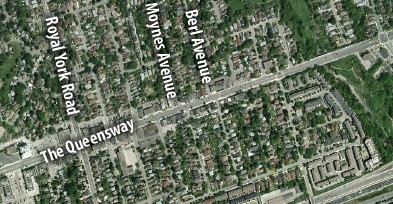
Study Site location.Image courtesy of STEP Case Study
On the north side of the street, in the commercial area, between, two different project sites just 10 meters apart were installed. The two bioretention study sites were a side by side comparison but differed in their design options. Both sites used an American Liberty Elms (Ulmus Americana Libertas) and Freeman Hybrid Maples (Acer x fremanii). “The east bioretention treats and infiltrates stormwater from the adjacent road, while the west site only receives water from the opening at the surface around the tree trunk. In essence the sites are comparing strategies on tree health and quantifying stormwater management of treating and infiltrating water versus an opening with no treatment. Note the Silva Cells and the soil in this study and in design are separated from surrounding soil, creating a control.
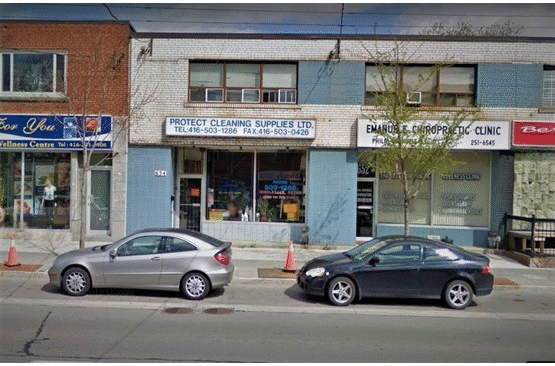
East site 2012-2019
The two sites were installed without disturbing existing utilities. As 50% of Toronto’s annual precipitation events are less than .19” (5mm), the Silva Cell system was sized and laid out to manage the runoff from a 2” (50mm), 24-hour rain event. Water is captured from the crown of the street to the building’s face and from one end of the block to the other. There are 16 cubic meters (600 cubic feet) of soil per tree. An 8” (20 cm) PVC pipe runs from the street catch basin into the top layer of the Silva Cell system, delivering all of the surface runoff from the roadway and adjacent sidewalk into the bioretention soil. A perforated PVC pipe then distributes the surface runoff evenly throughout the soil and the water infiltrates until it reaches the bottom of the system. At the bottom is a perforated drain line carries any excess overflow into the existing stormwater system.
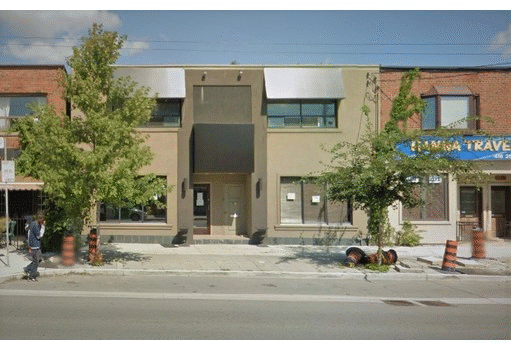
West site 2012-2019
The project took three days to complete construction, using a crew of five. An impermeable membrane was installed in order to facilitate monitoring – an element that would not normally be included in a system of this kind. The City with assistance from Ryerson University installed monitoring equipment to track the volume of infiltration and quality of water in and out of the Silva Cells. According to an interim results report in 2014, both sets of trees were irrigated with stormwater runoff for four years.
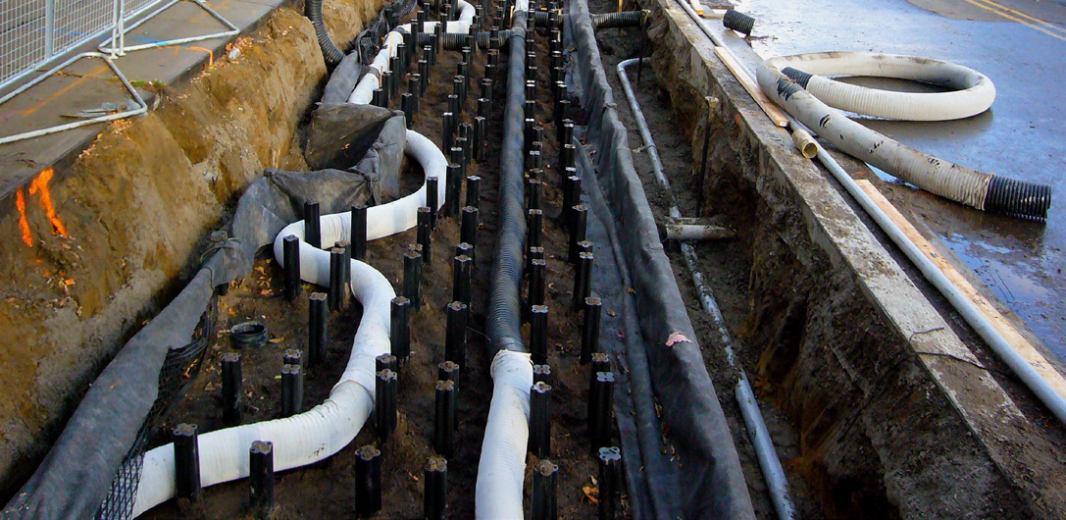
Distribution Pipe laid atop the Soil in between Silva Cell posts. Image courtesy of City of Toronto.
In 2011, the west site was disconnected from the associated catch basin, and only receives water that flows through the tree opening, reducing the total available water received. The east site remains connected to the catch basin and receives runoff from the road and sidewalk.
The trees on the east site which continued to receive stormwater runoff were healthier than the isolated trees. In addition, they were not impacted from salts (often put on the streets in the winter), even though runoff is directed to the Silva Cells and root system.
Monitoring results showed reduced TSS and heavy metals from the road run off that entered the system. The TSS removal rate exceeded the 80% TSS reduction that most regulators require and was close to 90%. Additionally, there was no runoff from the site after a rainfall of 3mm following periods of no rain, meaning the system captured all the stormwater on the site. Post-construction monitoring can aid in evaluating when technologies are effective and where they can provide recommendations.
Considerably less maintenance is required compared to a daylighted bioretention set-up such as a bioswale. Daylighted systems require site visits to pick up trash build-up and maintain vegetation growth. The Silva Cell 100-year life expectancy requires zero maintenance.
DeepRoot is proud to have been part of the green infrastructure transformation and looks forward to the Elms and Maples on the East and West project on The Queensway continue to grow! We can’t wait to see how the trees look in another 10 years! Thank you to our partners at TRCA, STEP, City of Toronto, Toronto Water, and Ryerson University.
